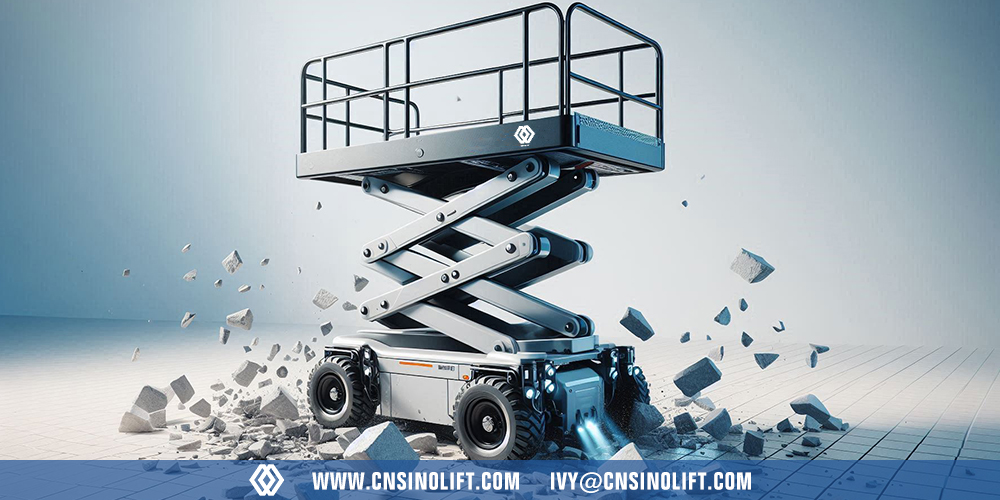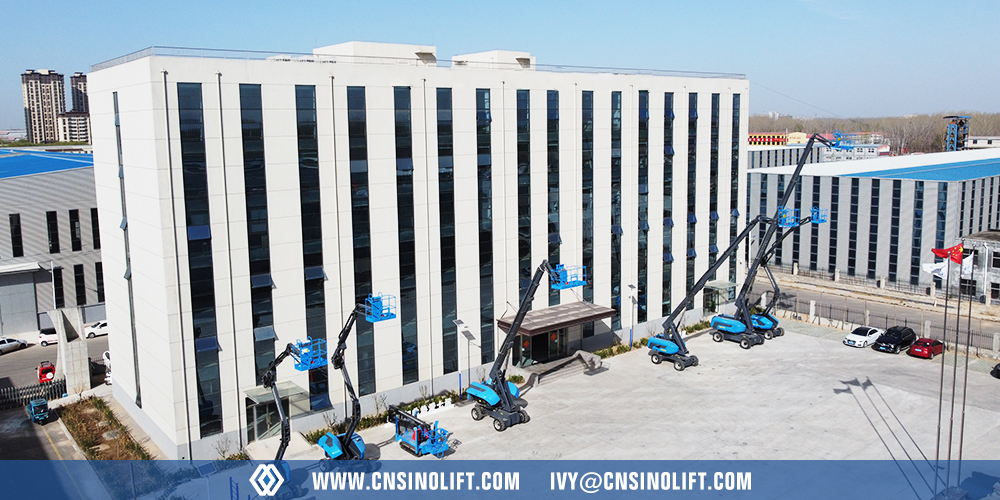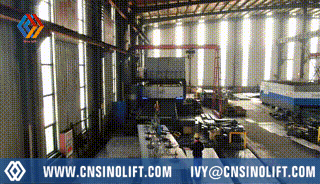
Electric self-propelled scissor lifts are widely used for indoor work, from warehouse installations to showroom maintenance. However, when operating on delicate surfaces like tile, many users ask: Can you drive an electric scissor lift on tile? Will it crack the floor? Can a scissor lift go on grass?
This guide gives you clear, professional answers — no vague advice — so you can protect both your lift and your flooring.
✅ Yes, but only under specific conditions.
You can safely drive an electric scissor lift on tile IF:
The tiles are heavy-duty commercial-grade, properly bonded to a strong concrete slab.
You use protective measures like heavy-duty mats or plywood sheets to distribute the machine’s weight.
The operator drives slowly and carefully—no sudden stops or sharp turns.
The lift is lightly loaded, staying well within rated platform capacity (e.g., under 230kg).
Example:
In a car dealership showroom with thick porcelain tiles laid over concrete, using plywood under each wheel and driving cautiously allows safe use without damage.
❌ Tiles can crack if any of the following happens:
Fragile tiles: Older, thin, or poorly installed tiles can't handle concentrated loads.
No load distribution: Wheels directly on tile cause too much point pressure.
Rough movements: Quick stops, sharp turns, or sudden elevation changes create shear stress that breaks the tiles.
Overweight loading: Overloading the platform increases wheel pressure on the floor.
Real Case Example:
In dealership discussions (source: Signs101 forum), many users reported cracked showroom tiles after driving a standard scissor lift without floor protection.
Heavy Concentrated Loads: Even a small electric scissor lift weighs 1,200–2,500kg unloaded.
High Wheel Pressure: Small, solid non-marking tires create intense pressure points.
Dynamic Forces: Movement adds lateral forces, making it worse for brittle tiles.
Our Machine Data:
Drive speed (stowed): 3.5 km/h
Drive speed (raised): 0.8 km/h
Lift speed: 3-5 m/min
Even though speeds are moderate, the load is heavy, and without surface protection, risk is significant.
❌ Generally, no.
Electric self-propelled scissor lifts are designed for hard, flat, stable surfaces like concrete or asphalt. Grass, dirt, or gravel is:
Uneven
Soft
Prone to sinking or tilting
This can cause:
Loss of traction
Difficulty maneuvering
Risk of tip-over accidents
For Grass or Soft Ground:
Use a rough-terrain scissor lift with four-wheel drive and larger pneumatic tires specially made for outdoor surfaces.
| Surface Type | Safe to Use? | Notes |
| Smooth concrete | ✅ | Best surface |
| Epoxy-coated floors | ✅ | No problem if coating is thick |
| Industrial tile | ✅ (with mats) | Use plywood/mats to protect tiles |
| Fragile residential tile | ❌ | Too risky, may crack |
| Grass or dirt | ❌ | Use rough-terrain model instead |
If your tile surface is too delicate to risk, switch to a lighter lift, such as an Aluminum Alloy Mast Lift.
Advantages of Aluminum Alloy Mast Lift:
Lightweight aluminum frame
Non-marking, wide tires to distribute load better
Lower overall pressure on flooring
Compact and easy to maneuver
✅ Example: HENAN SINO LIFT’s Aluminum Alloy Lift
Max platform height: 6m
Weight: 265kg
The product has a light weight, Perfect for polished showrooms, malls, museums, and high-end tile environments.
Driving a scissor lift on tile is possible, but only if you protect the surface and operate carefully.
Most fragile or old tiles are unsafe without proper load distribution.
Never drive a standard scissor lift on grass—use rough-terrain equipment instead.
For delicate floors, recommend aluminum alloy lifts for safe, effective work.
Choosing the right lift for your flooring saves you from costly repairs and project delays!
Q1: Can you drive a self-propelled scissor lift inside a shopping mall with tiled floors?
A1: Yes, if tiles are industrial-grade and protective mats are used.
Q2: Will driving slowly guarantee tiles won’t crack?
A2: Not always. Without mats, even slow movement can crack weak tiles.
Q3: Is grass totally unsafe?
A3: Yes. Grass lacks the support a lift needs and risks sinking or tipping.
Q4: What should I do if unsure about the floor type?
A4: Always assume caution: lay plywood sheets and reduce platform load, or switch to a lighter aluminum lift.

